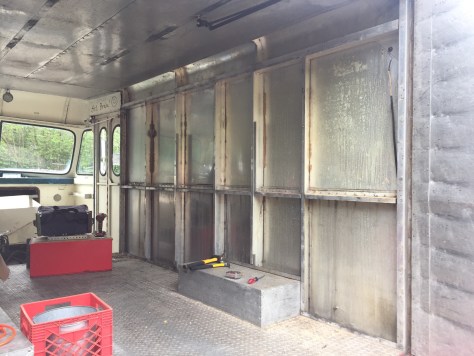Not just in politics, but in life too.
Got my custom acrylic back today from TAP Plastics in Tigard. The holes were a little off but I needed to drill them out bigger anyway to fit my #10 machine screws through both pieces. This was a delicate process but by stepping up through three bit sizes, I got there with no damage.
The result is beautiful at every angle, especially in the sunlight. This will hang either over the steering wheel or over the center of the cockpit, under the custom shelf and storage cabinets I’m building over the windshield. The position depends on whether it blocks any sight lines. And if it blocks too much, I can always flip it over and mount it lower on a dashboard mount.
All I need to do now is select, mark and drill the holes in the sides that will secure the Pioneer AppRadio 4 receiver in place. I’m using #10 thumbscrews to secure the gimbal mount to the 2-1/2 inch screws. But for final installation I might swap those out for capture bolts on 2-inch screws. All the hardware is stainless steel, of course. You wouldn’t want any chance of corrosion marring the acrylic.
Now the two most important parts of the project are pretty much done: The main audio/video receiver with Apple CarPlay, and my four custom Sony speakers in Photon Torpedo Tubes. If only I had a clean van to install them in…










